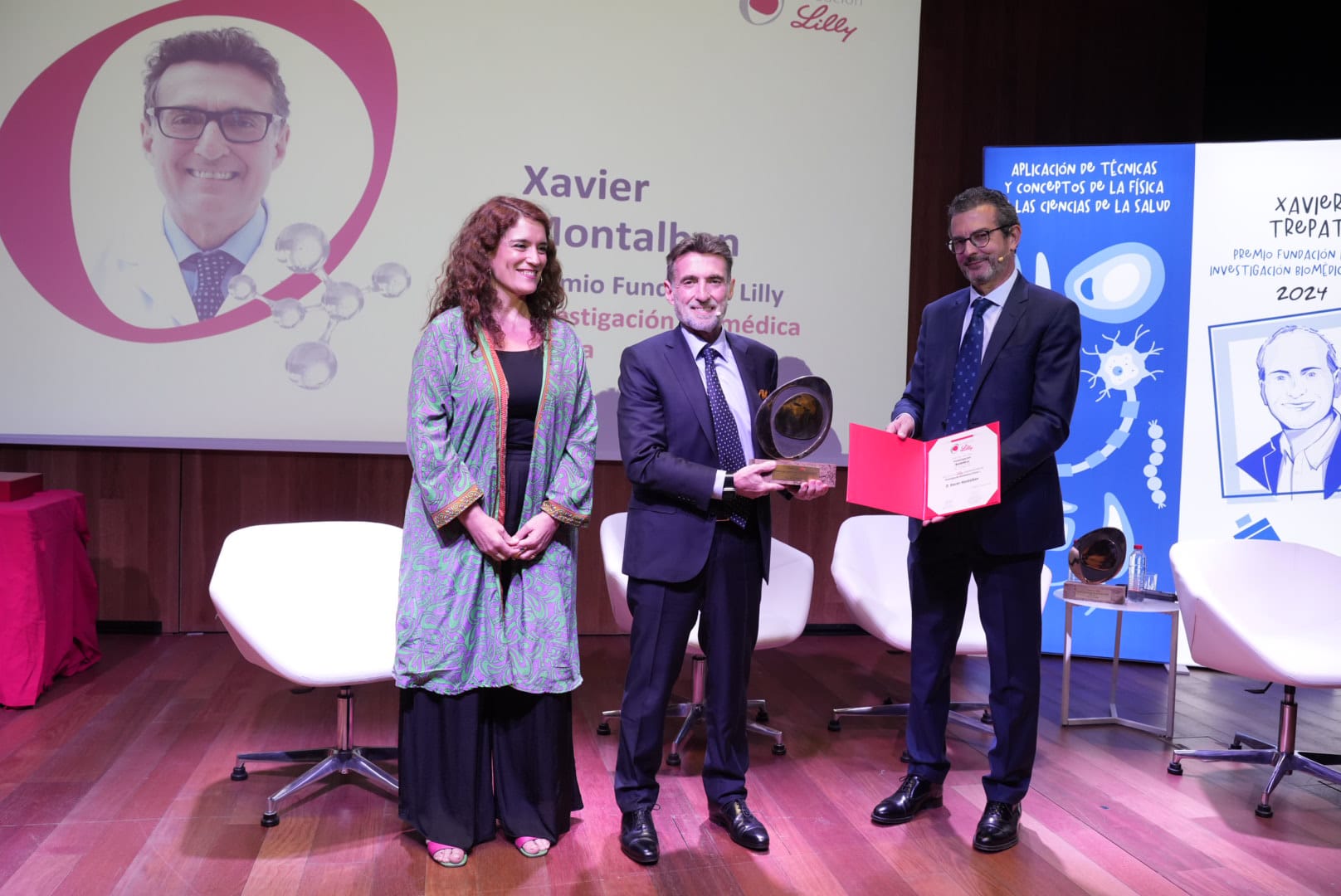Dr. Xavier Montalban receives the Lilly Foundation Award from

Over the past 30 years, the prognosis for patients with multiple sclerosis has improved significantly. Previously, when the disease was unknown and there was no treatment, the probability of reaching 40 years of age with a group 3 disability was 86%. Now, with 14 treatments available and early diagnosis, that probability has dropped to 20%. Pioneering work in Spain by Dr. Xavier Montalbán, head of the neurology service at the Vall d’Hebron University Hospital and director of the Multiple Sclerosis Center of Catalonia (Cemcat), has contributed greatly to this improvement in long-term prognosis. Head of the Clinical Neuroimmunology Group at the Vall d’Hebron Research Institute (VHIR), Professor of Neurology at the Autonomous University of Barcelona and Professor of Neurology at UVic-UCC, for which he was awarded the Lilly Foundation Award for Clinical Research. Biomedical Research 2024, which took place yesterday in Madrid.
Montalban’s leadership and dedication to biomedical research continues to pave the way for a future in which multiple sclerosis becomes increasingly manageable and less devastating for those who suffer from it. As next challenges, he emphasizes the need for continued research into neuroprotective and restorative treatments. “We are now very effective at suppressing focal inflammation. But with slow neurodegeneration, things are much worse. “We are working on specific projects with the goal of neuroprotection and recovery.”says Montalban. In fact, as a member of the Scientific Committee of the International Progressive Multiple Sclerosis Alliance, he is involved in the search for treatments that not only suppress inflammation but also repair neurological damage.
Dr. Montalban is also immersed in finding new ways to combat multiple sclerosis using handheld devices and smartphones. An example of this is the RADAR-CNS initiative.
AI to determine optimal treatment
During his career, Dr. Montalban has worked extensively to identify clinical, radiological and biological prognostic factors for early diagnosis of disease. In 1995, he established the pioneering Cemcat Center where, through a prospective patient cohort, he tracked thousands of cases that provided key data to improve the diagnosis and treatment of multiple sclerosis.
The center was able to develop personalized medicine models using artificial intelligence to analyze data and create algorithms to determine the optimal treatment for each patient. “Creating this cohort has been the most important success of my academic life. Although the disease continues to have a significant psychological and physical impact, many patients are now able to maintain a high quality of life and lead normal lives.says Montalban.
World leader in multiple sclerosis research
Dr. Montalban conducted research that changed the understanding and treatment of multiple sclerosis. One of his most notable contributions was his demonstration that the disease progresses even without overt outbreaks, which changed the therapeutic approach for early intervention and improved long-term prognosis.
“We now know that multiple sclerosis is a continuum, that there is not an exacerbating form, but a progressive one. The pathogenic mechanisms are the same throughout the disease. Therefore, it is critical to intervene promptly after diagnosis to improve long-term prognosis.”Explain.
Moreover, there has rarely been a study of a disease-modifying therapy in which I did not play an important role in the design and execution of the study and the eventual integration of the therapy into contemporary practice.
Dr. Montalban emphasizes that without teamwork, none of this would be possible.
